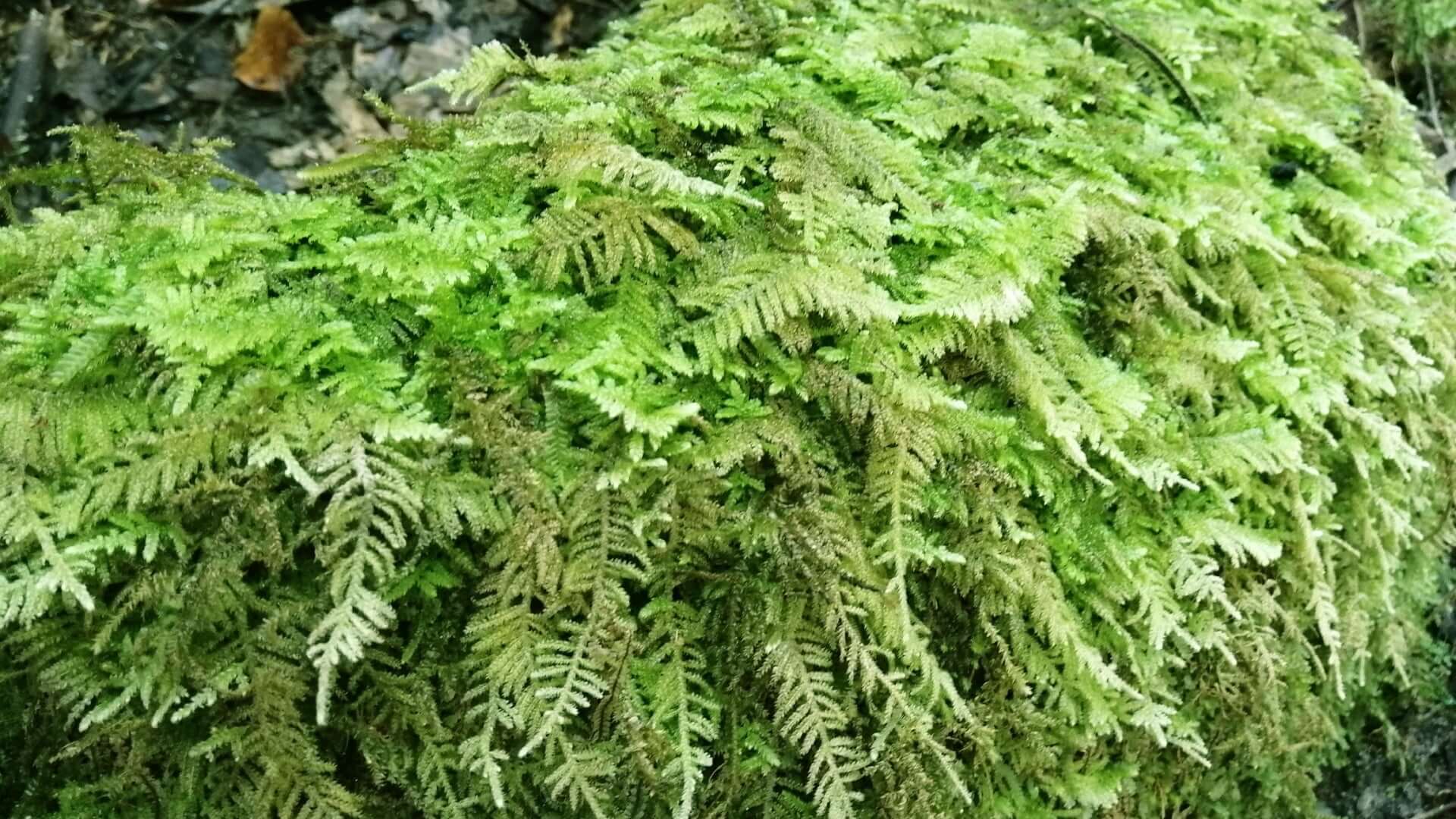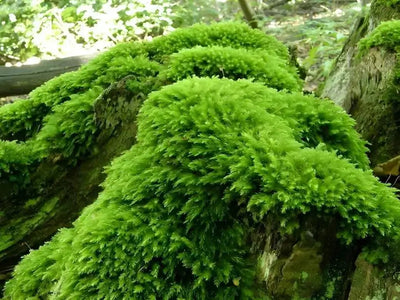How fast does Thuidium Moss spread?
Thuidium Moss is a slow but steady grower, gradually creeping across surfaces to create a lush, velvety carpet of greenery. Though it doesn't spread rapidly like some ground covers, its deliberate growth rate allows it to establish itself over time, forming dense patches that eventually dominate the landscape. In optimal conditions, Thuidium Moss will thrive, but it takes patience. Moist, shaded environments with plenty of organic matter in the soil provide the ideal conditions for its spread. Rather than racing across the ground, this moss works methodically, building a mat-like structure that gives gardens a tranquil and established feel. Over time, as it finds its footing, Thuidium Moss integrates itself into the garden's microecosystem, aiding in moisture retention and promoting a serene, soft appearance underfoot. Its slow spread benefits many gardens, offering gardeners control over how and where they want to cultivate this soft green blanket.
What is Thuidium Moss used for?
Thuidium Moss is revered for its versatility and aesthetic appeal. It's often used to cover the soil in shaded areas, acting as a natural alternative to grass where the sun doesn't penetrate deeply. Gardeners appreciate its ability to give their landscapes a lush, forest-like ambiance. This moss is ideal for adding texture and depth to garden beds, pathways, and even stone walls. Due to its dense, thick nature is also excellent for soil erosion control, particularly on slopes or areas prone to runoff.
Thuidium Moss excels as a soft ground cover in Japanese or woodland-style gardens, offering a cushiony feel that contrasts beautifully with hardscape elements like stones, boulders, or wood features. It's also famous for living art installations and terrariums, as its delicate fronds and fine texture are visually appealing and functional. Thuidium Moss can thrive near water features like ponds or fountains in water gardens, bringing a relaxed, calm vibe. Its natural affinity for moisture means it can serve as a stabilizing ground cover in areas prone to high humidity or frequent rain. Some garden enthusiasts use it in containers or mixed with other moss species to craft miniature garden landscapes or accentuate bonsai arrangements.
What time of year should Thuidium Moss be planted?
Thuidium Moss can be planted at various times throughout the year, though fall and spring are generally the most optimal seasons. In the fall, when temperatures are more relaxed and moisture levels in the soil are naturally higher, the moss has time to settle into its new surroundings without the pressure of intense heat. Planting in spring, on the other hand, allows Thuidium Moss to take advantage of the growing season's early moisture and milder temperatures before the heat of summer sets in. The mild conditions of these seasons give the moss ample opportunity to establish its roots and begin its slow, steady spread.

It's important to note that Thuidium Moss thrives best in moist, shaded conditions, so planting it during consistent rainfall will boost its chances of establishing itself quickly. Avoid planting during harsh summer conditions, as the heat and drying winds can make it difficult for the moss to acclimate and spread. While the moss is resilient, it prefers a nurturing environment that supports gradual development. Winter planting can work in milder climates, where freezing is minimal, but it's always best to ensure the soil is workable and moist. By choosing the right time to plant, you're setting Thuidium Moss up for success, allowing it to thrive and slowly cover the area with its soft, verdant fronds.
What is the life cycle of Thuidium Moss?
Thuidium Moss follows a fascinating life cycle, different from many garden plants. As a bryophyte, it doesn't produce seeds or flowers. Instead, its life cycle is characterized by two main phases: the gametophyte and sporophyte stages. The gametophyte is the moss stage you're familiar with, the velvety, green mat that spreads across the ground. This is where the moss grows, spreading water and nutrients directly through its leaves.
In its sporophyte phase, the moss produces small, stalk-like structures topped with capsules that release spores. The wind or water spreads these spores, and when they find a suitable spot, they germinate and grow into a new moss plant. This subtle reproduction method ensures that Thuidium Moss spreads gently and naturally across the landscape.
One of the benefits of this life cycle is its adaptability. Thuidium Moss is highly resilient and can withstand drought by entering a dormant state. When water becomes available again, it can quickly return to life, absorbing moisture and becoming lush and green once more. This cyclical nature makes Thuidium Moss a reliable choice for garden settings where conditions may fluctuate. Its ability to thrive in the shade and remain relatively low-maintenance throughout its life makes it a popular addition to many types of landscapes, from woodland gardens to more structured ornamental designs.
In addition to its ability to reproduce through spores, Thuidium Moss also spreads vegetatively, meaning that parts of the moss can break off and establish new colonies if they find a favorable environment. This dual method of propagation ensures that Thuidium Moss remains a fixture in the landscape, offering a consistent and reliable presence in the garden for years to come.
Thuidium Moss, with its slow, measured spread and low-maintenance nature, is an ideal choice for gardeners looking to create a calm, serene, and natural landscape. Whether used as ground cover, in rock gardens, or near water features, its presence brings a soft, organic beauty to any garden, encouraging a peaceful atmosphere that evokes the feeling of a woodland retreat. With the proper care and placement, Thuidium Moss can convert even the most common spaces into lush, green sanctuaries.


